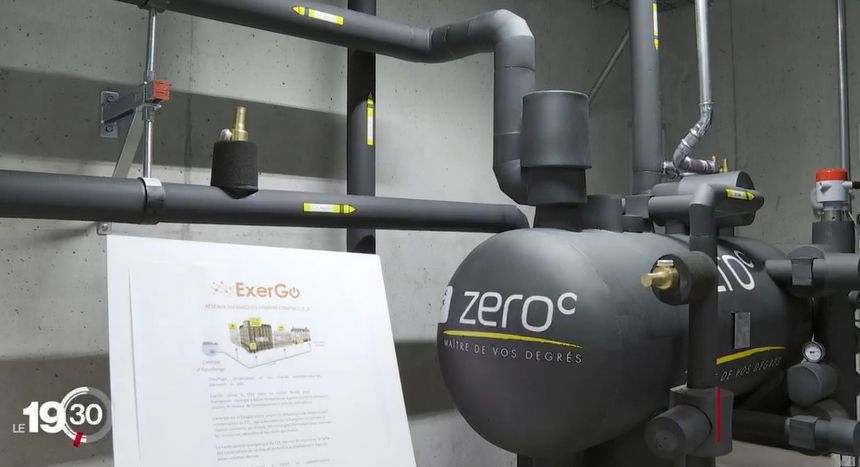Using CO2 to heat and cool the cities of the future

The world’s first prototype of a thermal network that uses carbon dioxide (CO2) as a fluid in pipes is currently being tested in Switzerland.
The prototype, which has a capacity of around 500 kilowatts (kW) of heat energy, is located in the basement of the Energypolis campus in the city of Sion in southwestern Switzerland. The designers of the project, which cost CHF4 million ($4 million), have one year to demonstrate that their technology works.
Household and industrial appliances produce heat that can potentially be reused; the same is true for cooling. Today, it is possible to transport unused thermal energy via large water pipes. But using CO2 in thermal networks would be much more interesting and economical, the project promoters argue.
“With one kilo of CO2 that evaporates and condenses, I will get ten times more energy than with a water system that cools or warms by three degrees,” explains project manager Jessen Page.
Accelerating the energy transition
Hundreds of scientists have been working on the project to replace water with CO2 in thermal networks. The developers say that it should be possible to use pipes to transport the liquid CO2 that are ten times more compact and cheaper, capable of crossing cities easily, connecting all buildings and which do not freeze up.
Such a system could, if combined with an intelligent energy management system, make cities autonomous, says François Maréchal, a professor at the Swiss Federal Institute of Technology Lausanne (EPFL), who is also responsible for the project.
“The advantage is that we will be able to seek out sources of heat that are normally released into the environment and bring them back into the buildings. This is one of the major solutions for the energy transition,” he says.
In addition, a network of underground CO2 pipes does not have to be buried deep underground. The pipes can, for example, be easily integrated into prefabricated pavements and connect all the buildings in a city as well as industrial sites.
“The city of the future will be heated and cooled with CO2,” says Maréchal.
The development of the prototype is being partly funded by the cantonal and federal authorities, as well as local industrial partners. If the project is successful, Oiken, the local electricity distributor, has already indicated its willingness to deploy it in a neighbourhood near the railway station in Sion.
Exergo, the company that has commercial rights to the technology, claims it has received enquiries from several interested parties, including in Dubai.
Those behind the project believe that it would be possible to have an operational network in two or three years.

In compliance with the JTI standards
More: SWI swissinfo.ch certified by the Journalism Trust Initiative
You can find an overview of ongoing debates with our journalists here . Please join us!
If you want to start a conversation about a topic raised in this article or want to report factual errors, email us at english@swissinfo.ch.